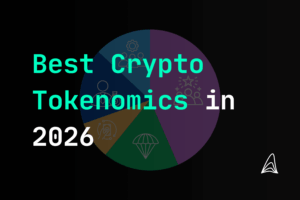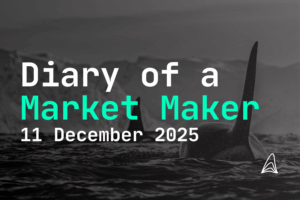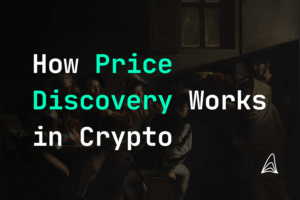
Real World Assets (RWAs) & Tokenization
- Jakob Brezigar
- Last updated: 22.May 2024
- Reading time: 7 min
Ever wished your prized art collection could pay your bills? Welcome to the world of tokenized real-world assets (RWAs), where dreams of liquid assets come true! Tokenized RWAs are physical or financial assets like real estate and art, transformed into digital tokens on a blockchain. This process allows for fractional ownership, greater liquidity, and enhanced transparency, making traditional investments more accessible and secure.

Table of Contents
What are real-world assets (RWAs) in the context of crypto?
Real-world assets (RWAs) are physical or financial assets, such as real estate, commodities, or art, represented digitally on a blockchain. This process, known as tokenization, allows for fractional ownership, enhanced liquidity, and improved transparency in asset management.
How does tokenizing real-world assets benefit investors?
Tokenizing real-world assets provides benefits like fractional ownership, reduced transaction costs, increased liquidity, and enhanced transparency. This democratizes access to valuable assets, allowing more investors to participate in diverse investment opportunities.
Why is tokenized real estate considered a strong investment?
Tokenized real estate is seen as a strong investment due to its significant growth potential, with the market projected to reach $16 trillion by 2030. It offers substantial returns, security, and growing appeal, making it an attractive option for investors.
Key Takeaways - Real World Assets:
- Tokenized real-world assets (RWAs) integrate tangible assets with blockchain, enhancing liquidity, transparency, and accessibility.
- Real estate and art are popular categories for RWA tokenization, offering diverse investment opportunities.
- Orcabay identifies tokenized art as a top investment, noting strong returns and reduced theft risk.
- The market for tokenized RWAs grew from $0 to over $337 million in 2023, indicating rapid adoption.
- Legal and regulatory compliance is critical for ensuring the integrity and security of tokenized assets.
Introduction to Real-World Assets (RWAs)
The integration of real-world assets (RWAs) into the crypto space is revolutionizing the financial landscape. By leveraging blockchain technology, traditional financial assets are being transformed into digital assets, enabling more efficient and transparent asset management. This article delves into the concept of RWAs, their benefits, and the processes involved in their tokenization. Real-world assets play a crucial role in bridging the gap between tangible and digital assets, offering a reliable foundation for the crypto ecosystem. As we explore the various facets of RWA tokenization, it’s essential to understand the transformative potential it holds for both traditional finance and the burgeoning world of digital assets.
What Are Real-World Assets (RWAs)?
Real-world assets encompass any physical or financial asset with intrinsic value. Examples include real estate, commodities, precious metals, art, and collectibles. These tangible assets, when tokenized, are represented digitally on a blockchain, allowing for easier and more secure transactions. By tokenizing real-world assets, investors can engage with a broader spectrum of assets that were previously inaccessible or illiquid. This process democratizes access to high-value assets and creates new investment opportunities. Furthermore, real-world asset tokenization facilitates the seamless integration of physical assets into the digital realm, enhancing the overall liquidity and transparency of the asset markets.

Why are RWAs Useful?
The usefulness of real-world assets lies in their ability to provide stability and real-world value to the digital asset ecosystem. Tokenized real-world assets enable investors to diversify their portfolios with tangible assets, offering a hedge against the volatility often seen in traditional digital assets. By incorporating RWAs, the financial landscape becomes more robust and resilient, ensuring that asset management practices are more comprehensive and inclusive.
Which Tokenized RWA Do We Perceive as an Interesting Investment?
We as crypto market makers, perceive tokenized real estate as an interesting investment opportunity among tokenized real-world assets (RWAs). The market for real estate tokenization was valued at $2.7 billion in 2022 and, according to a report by the Boston Consulting Group, is projected to skyrocket to $16 trillion by 2030. This immense growth potential highlights the lucrative nature of tokenized real estate investments. Tokenized real estate offers substantial investment returns and security, comparable to other tokenized assets like art and collectibles. This trend signifies not only the growing investor confidence but also the robustness and potential for significant returns in the tokenized real estate sector, making it a compelling choice for discerning investors.
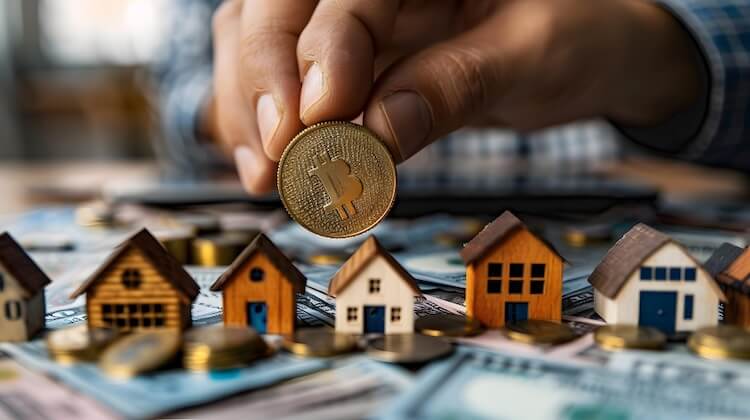
Real-World Asset Tokenization
Tokenization is the process of converting physical assets into digital tokens that represent ownership. This allows for fractional ownership, greater liquidity, and improved transparency in asset management. Tokenization democratizes access to assets that were previously illiquid and difficult to trade. This process involves multiple steps, including asset identification, valuation, and the creation of smart contracts to govern the transactions. By utilizing blockchain technology, tokenization ensures the security and immutability of asset records, making it an attractive solution for both investors and asset managers.
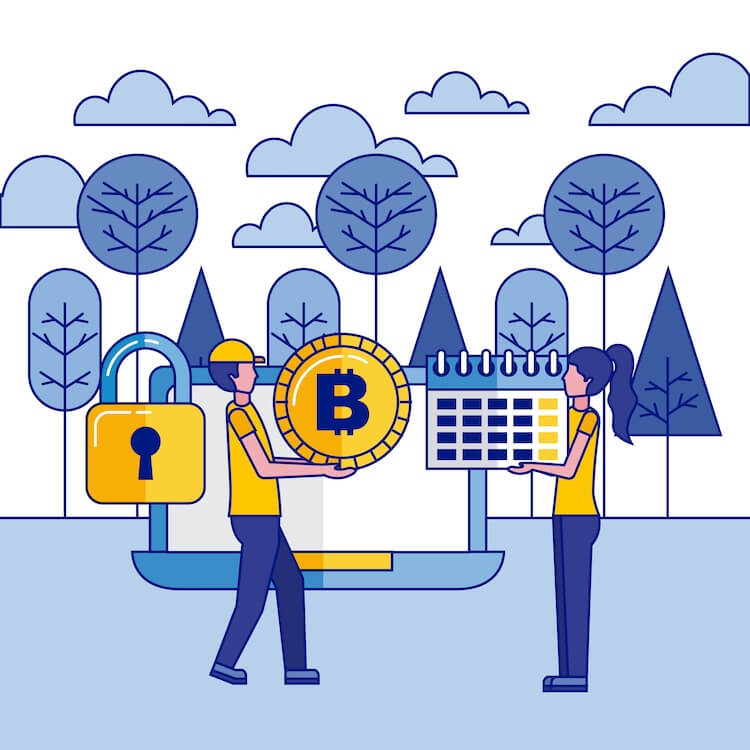
Real-World Assets in Decentralized Finance (DeFi)
In decentralized finance (DeFi), tokenized real-world assets play a crucial role. They enable users to leverage physical assets in financial transactions, providing collateral for loans and enhancing liquidity. This integration bridges traditional finance with the burgeoning DeFi ecosystem. By incorporating RWAs, DeFi platforms can offer a more diverse range of financial products, catering to a wider audience. Moreover, the use of real-world assets in DeFi introduces a layer of stability and reliability, which is often lacking in purely digital assets.
Tokenized Real-World Assets, Explained
Tokenized real-world assets are digital representations of physical assets on a blockchain. These tokens can be bought, sold, and traded on various platforms, just like traditional financial assets. The tokenization process involves several key steps to ensure the accurate and secure digital representation of the asset. This includes the use of smart contracts to automate transactions and enforce ownership rights. By tokenizing real-world assets, investors gain access to a more transparent and efficient market, where the risks associated with traditional financial assets are mitigated. Furthermore, the use of blockchain technology ensures that the records of asset ownership and transactions are immutable and tamper-proof.
The Tokenization Process
Tokenizing Tangible Assets
The tokenization of real-world assets involves several stages, from asset identification to the creation of smart contracts. This process requires a thorough understanding of both the physical asset and the blockchain technology used to tokenize it. By carefully selecting and valuing the asset, and then creating digital tokens to represent ownership, the tokenization process can ensure the accurate and secure representation of the asset. The integration of blockchain technology and smart contracts further enhances the reliability and efficiency of asset management practices. This comprehensive approach to tokenization helps bridge the gap between traditional finance and the digital asset ecosystem.

Asset Identification and Valuation
The first step in tokenizing an asset is identifying a suitable real-world asset and determining its value. This involves thorough due diligence and accurate appraisal to ensure the asset’s worth is correctly represented. The process of asset identification and valuation is critical, as it lays the foundation for the subsequent steps in the tokenization process. By conducting a meticulous assessment of the asset’s value, the tokenization process can accurately represent the asset in digital form, ensuring that investors have confidence in the integrity and reliability of the tokenized asset. This step is essential for maintaining the trust and credibility of the tokenization process.
Token Creation
Once the asset is identified and valued, digital tokens are created to represent fractional ownership. These tokens are generated on a blockchain platform, ensuring they are secure and immutable. The creation of digital tokens involves the use of advanced cryptographic techniques to ensure that the tokens are tamper-proof and resistant to fraud. By leveraging blockchain technology, the token creation process ensures that the ownership records are transparent and easily verifiable. This step is crucial for enhancing the overall security and reliability of the tokenized asset, making it an attractive option for investors seeking to diversify their portfolios with real-world assets.
Blockchain Platform Selection
Choosing the right blockchain platform is critical for the tokenization process. Platforms like Ethereum, Algorand, and Polymesh offer robust infrastructure and security features necessary for managing tokenized assets. Each platform has its own unique features and capabilities, making it essential to select the one that best suits the needs of the tokenized asset. The choice of blockchain platform can significantly impact the efficiency and security of the tokenization process.
Creation of Smart Contracts
Smart contracts are essential in the tokenization process. They automate the execution of agreements and transactions, ensuring transparency and reducing the risk of fraud. These contracts are coded on the blockchain and enforce the terms of ownership and transfer of the tokenized asset. By utilizing smart contracts, the tokenization process can ensure that all transactions are executed in a secure and transparent manner. This step is critical for maintaining the integrity of the tokenized asset and ensuring that all parties involved have confidence in the reliability of the transactions. The use of smart contracts enhances the overall efficiency and security of the tokenization process.

Key Platforms and Technologies
The Chainlink Platform's Role in Tokenized RWAs
Chainlink plays a significant role in the ecosystem of tokenized real-world assets. It provides decentralized oracles that enable smart contracts to securely interact with real-world data, ensuring the accuracy and reliability of information used in tokenization. By leveraging Chainlink’s decentralized oracle network, the tokenization process can access real-time data from various sources, enhancing the overall accuracy and reliability of the tokenized asset. This integration of decentralized oracles and blockchain technology ensures that the tokenization process is both secure and efficient, making it an attractive option for investors and asset managers alike.
Examples of Real-World Assets on Algorand
Algorand is another prominent platform for tokenizing real-world assets. It offers high performance and scalability, making it ideal for managing a diverse range of assets, from real estate to art and collectibles. The use of Algorand’s blockchain technology ensures that the tokenization process is both secure and efficient, enabling the seamless integration of real-world assets into the digital ecosystem.
Specific Asset Categories for Tokenization
Real Estate
Real estate is one of the most popular categories for tokenization. By converting property ownership into digital tokens, real estate investments become more accessible, liquid, and transparent. Investors can buy fractional shares of properties, diversifying their portfolios without the need for significant capital. The tokenization of real estate offers several key benefits, including enhanced liquidity, reduced transaction costs, and greater transparency. By leveraging blockchain technology, the tokenization process can ensure that the records of property ownership and transactions are immutable and easily verifiable.

Art and Collectibles
Tokenizing art and collectibles democratizes access to valuable items traditionally reserved for wealthy investors. Digital tokens representing fractional ownership of these assets allow a broader range of people to invest in and trade art and collectibles. The tokenization of art and collectibles offers several key benefits, including enhanced liquidity, reduced transaction costs, and greater transparency. By leveraging blockchain technology, the tokenization process can ensure that the records of ownership and transactions are immutable and easily verifiable. This makes art and collectibles tokenization an attractive option for both investors and asset managers seeking to diversify their portfolios with high-value assets.
Benefits of Real-World Assets Tokenization
The tokenization of real-world assets offers numerous benefits. It enhances liquidity by allowing fractional ownership, reduces transaction costs through automation, and increases transparency through the immutable nature of blockchain. Furthermore, it democratizes access to valuable assets, enabling more people to participate in investment opportunities. The use of tokenized real-world assets also enhances the overall efficiency and accessibility of asset management practices, making it easier for investors to diversify their portfolios and engage with a broader spectrum of assets. By leveraging blockchain technology, the tokenization process ensures that the records of ownership and transactions are secure, transparent, and easily verifiable. This makes the tokenization of real-world assets an appealing option for investors seeking to mitigate risks and optimize their investment strategies. Additionally, the enhanced liquidity provided by fractional ownership allows for more dynamic and flexible portfolio management.
Legal and Compliance Issues
Legal and Regulatory Compliance
Legal and regulatory compliance is critical in the tokenization of real-world assets. Ensuring that the tokenization process adheres to existing laws and regulations helps protect investors and maintains the integrity of the financial system. Compliance involves navigating complex legal frameworks and obtaining necessary approvals from regulatory bodies. This can include ensuring that the digital tokens meet the criteria for securities, understanding cross-border regulations, and adhering to anti-money laundering (AML) and know-your-customer (KYC) requirements. Proper legal and regulatory compliance is essential to fostering trust and confidence among investors and stakeholders in the tokenized asset ecosystem.
How to Tokenize Real-World Assets
Tokenizing a real-world asset involves several practical steps, starting with the selection of the asset and moving through valuation, token creation, and smart contract development. Each step must be meticulously planned and executed to ensure the successful tokenization of the asset. This process not only involves technical aspects but also requires a comprehensive understanding of legal and regulatory requirements to ensure compliance. The tokenization process also benefits from the use of blockchain platforms and smart contracts to automate and secure transactions, enhancing the overall efficiency and reliability of asset management.
Disclaimer: The information provided in this article is for informational purposes only and does not constitute financial, investment, or other professional advice. All opinions expressed herein are solely those of the author and do not represent the views or opinions of any entity with which the author may be associated. Investing in financial markets involves risk, including the potential loss of principal. Readers should perform their own research and consult with a licensed financial advisor before making any investment decisions. Past performance is not indicative of future results.

Jakob Brezigar
Jakob, an experienced specialist in the field of cryptocurrency market making, boasts an extensive international presence. With Orcabay, he has skillfully managed major operations and deals for a wide array of global stakeholders.

